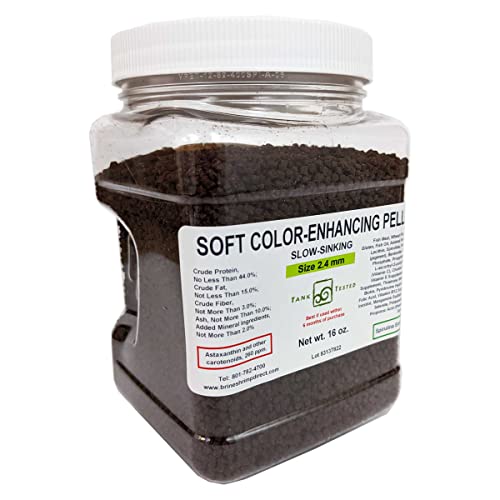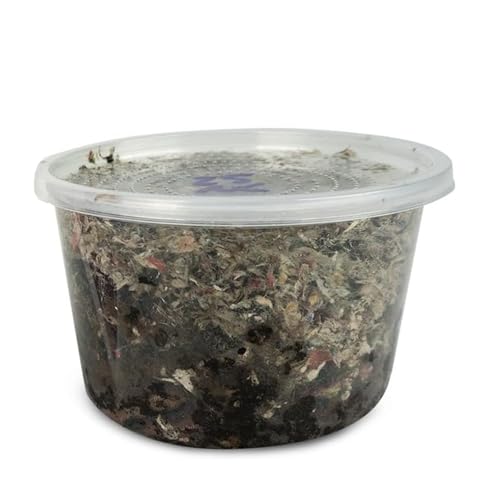Axolotl Food: What To Feed Axolotl (And What Not To)
Navigating the dietary needs of axolotls? Uncover the essentials of what these unique aquatic creatures crave. This guide dives deep into the preferred foods of axolotls, ensuring they remain happy and healthy. Let’s explore their fascinating culinary world. Dive in!
What Do Axolotl Eat?
Axolotls are carnivorous and typically consume a diet of live prey. In their natural habitat, they feast on small aquatic creatures like worms, insect larvae, and tiny fish. In captivity, axolotls are often fed a diet of bloodworms, brine shrimp, and specially formulated axolotl pellets. It’s essential to provide them with nutrient-rich food to ensure their health and longevity.
What types of axolotl food are there?
Axolotl food can be divided into three main categories:
- Live Food
- Frozen Food
- Pellets
When an Axolotl is first born, their first instinct with food will be to lick and snap at anything alive and moving. If your Axolotl is young, you start by feeding them live food. Older axolotls can start moving on to frozen food and pellets.
For more info about what to feed axolotl and how to keep axolotls healthy, keep reading! One thing for you to always remember…wash your hands every time before you begin feeding your Axolotl!
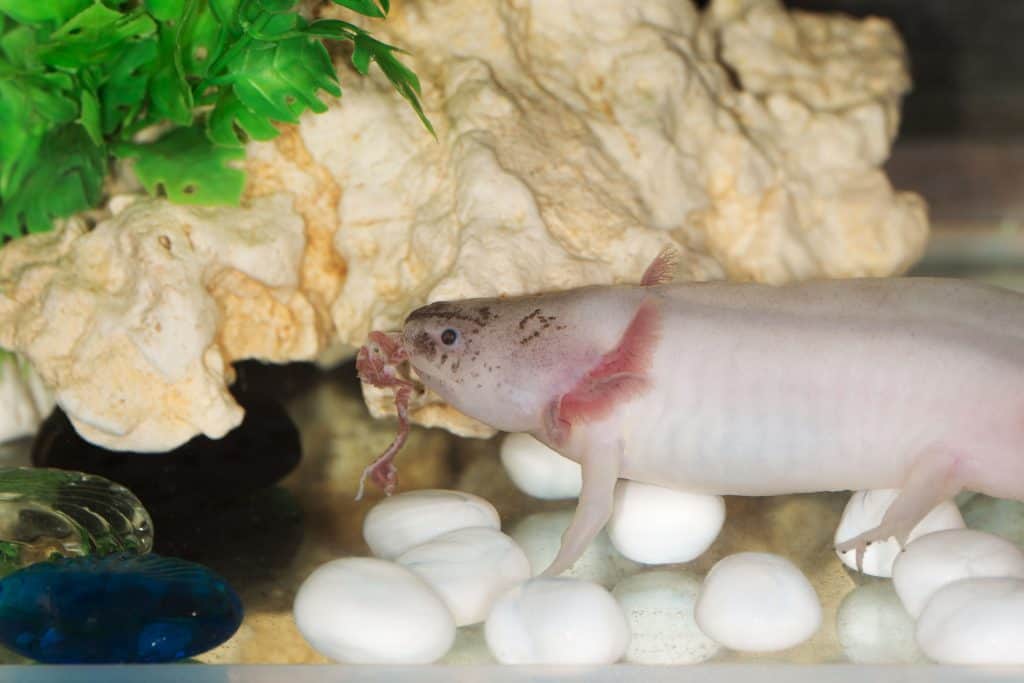
1. Live Food for Axolotls
If your Axolotl has just hatched, you must wait 24 hours before feeding axolotls. Younger Axolotls will still be consuming their egg sack during this time.
After this 24-hour period, for most Axolotl parents, a living diet is the way to go. Most Axolotl parents tend to go with Live Worms. This may range anywhere from Nightcrawlers to Red Wiggler Worms.
Whatever your choice, chances are your Axolotl’s natural instincts will take over, and they will snap it up!
Axolotls Eat Live Worms
Avoid places online or other areas such as Walmart when purchasing your live worms, as their worms may not always be the freshest.
Instead, to avoid making your Axolotl sick, go to your pet store if you want to feed your pet live worms.
Before feeding your Axolotl, grab a pair of tweezers to pick up a worm from the dirt container. Ensure you fully wash off any loose dirt on the worm, as you do not want to get any of it in your Aquarium. It could make your pet sick!
Using the tweezers, slowly lower the worm into the tank and in front of your Axolotl’s face.
It may take your Axolotl a while to eat the worm. This is because their teeth are meant for grinding rather than shredding. You may see the worm go in and out of your Axolotl’s mouth a few times before they can fully get it down.
Axolotls Eat Daphnia
These small crustaceans can make an easy treat for your pet Axolotl in the larval stage. They can be inexpensive, too, if you decide to go the home-cultured route with them.
Daphnia will supply your Axolotl with fatty acids, lipids, and vitamins. All essential nutrients for your growing baby Axolotl! Try feeding these to your fully grown pet; they will likely turn it down.
However, if not home-cultured, there is still
2. Frozen Foods for Axolotl Pets
Axolotls Eat Bloodworms
Bloodworms can be purchased from your local pet store. They are also really cheap on Amazon if you are a prime member. This food comes in two different shapes: sheets or cubes.
Depending on which one you buy, ensure they do not get stuck in your Axolotl’s gills while eating. If this happens, your Axolotl will not be able to breathe and will drown!
Make sure that bloodworms do not get stuck in your Axolotl’s gills while they are being fed!
Bloodworms tend to be a popular choice with most Axolotl parents because they are fully loaded with vitamins and proteins that will help your pet while he or she is still growing.
To feed your Axolotl, you should start by placing the Bloodworms in water to thaw them out.
When you are done thawing, use a pair of tweezers or tongs to place the Bloodworm in front of your Axolotl’s face so they can easily reach their food.
However, as popular a choice as this food may be, there is one thing you should keep in mind when feeding these to your pet. Bloodworms leave behind microscopic organisms that will take over your tank if you do not carefully clean your water.
These organisms are not harmful to your Axolotl but will act as a nuisance and get caught in their gills often. When cleaning out their tank, move your decor around and try to clean as best as you can.
3 Bestselling Bloodworms on Amazon:
Axolotls Eat Brine Shrimp
Another popular choice with Axolotl parents, Brine Shrimp are very flavorful and are loaded with fatty acids, lipids, and vitamins for your Axolotl. They can be ordered online or found in your local pet store.
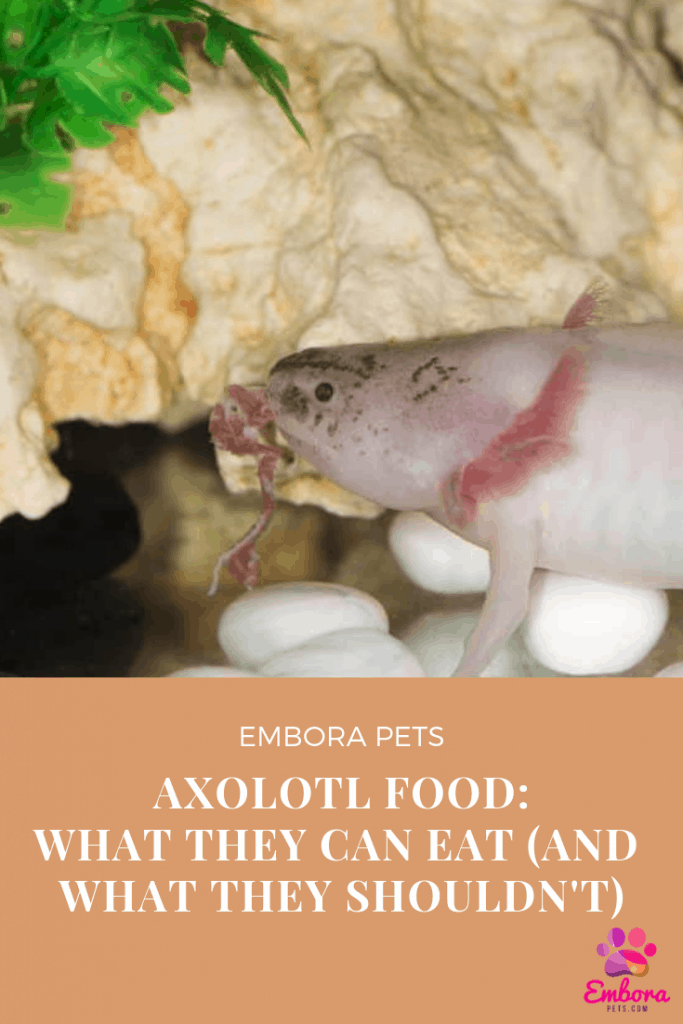
This food choice only comes in a cube shape and should be mixed with water to thaw it out.
When you are ready to feed your Axolotl, try loading a Turkey Baster with the Brine Shrimp to help the food reach your Axolotl’s cute little face.
Brine Shrimp can also be hatched and home-cultured! So, if you would prefer to feed these to your Axolotls as a live food option rather than frozen, that is also perfectly acceptable.
3 Popular Brands of Brine Shrimp To Feed Your Axolotl
Axolotls Eat Earthworms
There is some debate on this one. Some Axolotl buyers swear by frozen earthworms and the health benefits that they bring to young Axolotls.
It has been discussed to some point whether or not this is the only thing that should be fed to baby Axolotls.
However, other Axolotl parents do not like to feed their Axolotl frozen Earthworms because they tend to become cold and mushy after the Earthworms unthaw.
If you are thinking of feeding earthworms to your baby Axolotl, try buying a container full of worms of various sizes. Your Axolotl should be happier this way as they age and can eat bigger worms.
You could also order your earthworms in bulk in some places online. This can sometimes be a cheaper option than to keep buying small containers from pet stores for a long time. Just be sure you are buying them from a reliable website first.
3. Pellets for Axolotl Food
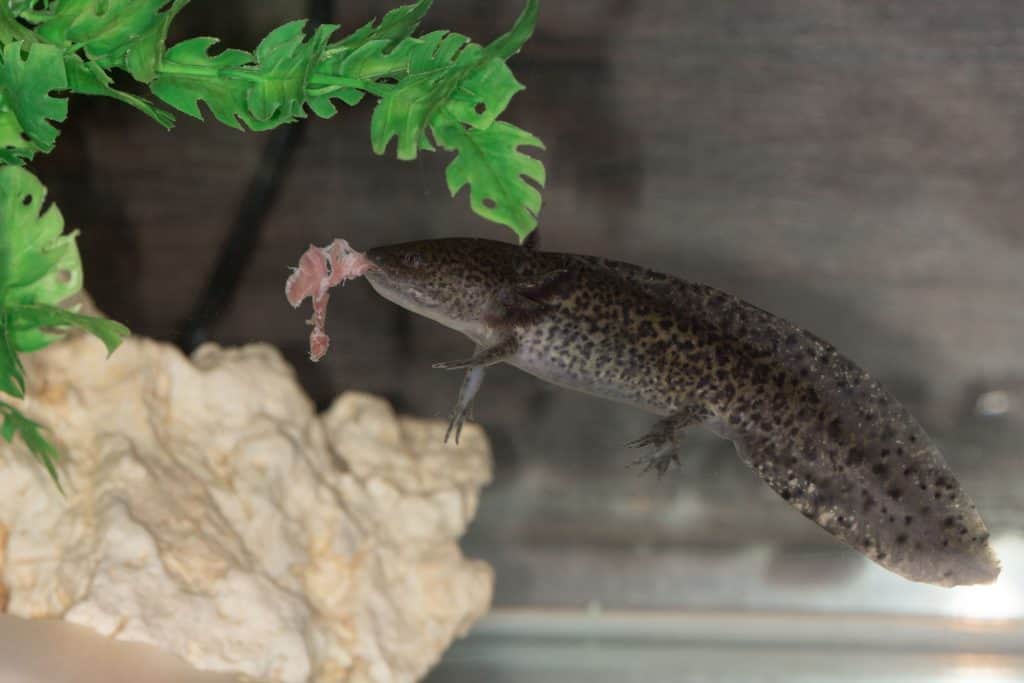
Chances are, pellets will be the easiest food you can find at your local pet store or any exotic pet store. When choosing a type of pellet, check the back of the label for the ingredients.
Choose a pellet that is high in protein and low in fat. A good rule is to look for something that has about 40% in protein or higher.
Two main kinds of pellets can be fed to your Axolotl:
Axolotls Eat Sinking pellets
For larger Axolotls, Slow Sinking Pellets are probably the best. You may already have noticed that Axolotls are happy when they can sit and hide at the bottom of their tanks.
As such, Axolotls are not like fish in that they will come up to the very top of the tank to get their food at the water’s surface.
This makes sinking pellets so great – they sink to the bottom of the tank!
Axolotls Eat Smaller Pellets

Small pellets are the best for young Axolotls, who would have difficulty eating regular sinking pellets because their mouths are too small.
Like an adult Axolotl, your Juvenile Axolotl will like to spend most of their time at the bottom of their tank. This makes things a little more difficult fosr you when you want to feed them small pellets.
Small pellets have a hard time sinking. And depending on your axolotl tank size, the trip to the surface can be tough for your juvenile axolotl. So here’s what you need to do:
Using water, go ahead and wet the pellets that you want to feed to your Axolotl. Next, fill up a Turkey Baster with the wet pellets and squeeze the baster, so the pellets fall down in front of your Juvenile Axolotl’s face.
The pellets should have an easier time sinking now that they are wet, and your Axolotl can eat them happily at the bottom of the tank.
3 Best Selling Pellets For Axolotls (Shop online):
What Not to Feed Your Pet Axolotl
For the most part, Axolotls are very happy eating whatever food you give them. However, there are a few exceptions to that rule.
For example, Axolotls can also easily mistake the gills and tails of other Axolotls as live worms or anything else of the sort and have been known to bite off the limbs of other Axolotls from time to time.
Here are the Top 3 Foods to stay away from if you own an Axolotl:
Anything with a Hard Exoskeleton
Most crustaceans or shellfish, such as Krill, are not recommended food for your Axolotl. With such a hard exterior meeting your Axolotl’s teeth, chances are something will end up coming out whole rather than fully digested.
For example, Mealworms are often seen being fed to other exotic pets, but they should not be fed to your Axolotl.
Mealworms contain Chitin, which is very difficult for an Axolotl’s stomach to process and digest. This Chitin makes up that hard exoskeleton, making things difficult on your Axolotl’s stomach.
Preserved or Processed Meats
I believe this one should speak for itself. Especially considering the effects, these foods have on humans in small quantities.
Any food that has been through a processing plant is loaded with chemicals and preservatives, which can have serious health implications for your Axolotl.
Feeder Fish
I know some Axolotl owners out there may disagree with the inclusion of this one, but there are many valid reasons you should stay away from fish.
So, if you are thinking about keeping your Axolotl with other animals, such as fish, think again.
If the fish you are placing in the Axolotl tank is intended to be dinner, you should stay clear of this idea as they can transfer diseases and parasites when eaten. (If you really want to feed live fish to your Axolotl, ensure you have quarantined the fish for at least 30 days.)
Long exposure and including this as a staple of your Axolotl diet can also lead to developing a Vitamin B Deficiency.
Not getting your Axolotl’s Vitamin B levels up can lead to further issues such as Anemia.
The Best axolotl Treats
Just like any other pet, you will want to spoil your Axolotl with treats occasionally.
The best axolotl treats include:
- Ghost Shrimp
- Prawn Meat (Be careful to avoid the shell)
- Tubifex Worms
- Guppies (if properly quarantined)
- Cherry Shrimp
- Whiteworms
- Daphnia

It is highly recommended that Axolotl owners stay away from feeding their pets “human food”. Instead, you should stick to what your Axolotl would be used to eating in the wild when feeding them treats.
And remember, a treat is just that – a treat! Don’t give in to the temptation of spoiling your Axolotl every day. You may miss out on many of their dietary requirements.
Review Of What To Feed Axolotl
So, let’s review everything quickly!
Axolotls can be fed three different categories of food
- Live Food
- Frozen Food
- Pellets
There are two main types of pellets, small and large. Which one you are feeding your Axolotl will depend on its size.
Make sure that you are avoiding anything that may have a hard exoskeleton and anything that could be considered “people food,” as it will be rather difficult for an Axolotl’s stomach to digest.
When giving your Axolotl treats, ensure you are not incorporating it into your pet’s everyday diet. Doing this could lead to certain deficiencies and other illnesses.
Lastly, if you are planning on hand-feeding your Axolotl, ensure your hands are clean and free of any outside material that could make your Axolotl sick.
You should also be rinsing off any live worms you plan to feed your pet. Doing so will eliminate any excess dirt that would make your pet sick or make your tank messier.
You could also invest in a pair of tweezers or a turkey baster to bypass directly feeding your Axolotl from your hands.
FAQ
How many bloodworms should I feed my axalotl?
Most Axolotls owners follow a protocol called “The Two Minute Rule.” This means that you should feed your Axolotl about how much it can eat in two minutes. However, some people stretch this feeding period to five minutes to an hour.
How long can you go without feeding an Axolotl?
If an Axolotl has been well-fed, it can go up to three weeks without eating any food. However, this is definitely not highly recommended. If your Axolotl is still a baby, you should feed them about once daily. Once it
is fully grown
You should feed your Axolotl about once every two to three days and follow the “Two-Minute Rule” to prevent overfeeding. Your Axolotl’s abdomen should be about the same size as its head.
What live fish can Axolotls eat? I would highly recommend that if you are thinking of feeding your Axolotl fish, you should be quarantining the fish for 30 days before. Otherwise, you will make your Axolotl very sick, and no one will be happy then!






